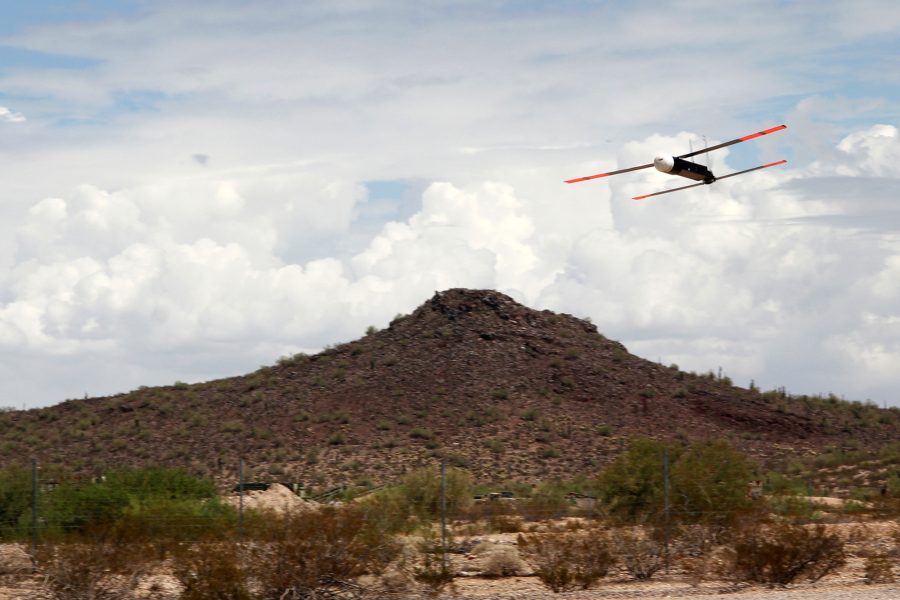Military research on how to protect against threatening unmanned aircraft has so far focused on two ends of the drone spectrum—store-bought products like small quadcopters and large, advanced aircraft akin to the MQ-9 Reaper. But Evan Hunt, high-energy laser business development lead at Raytheon, argues there’s more to know about those that fall in the middle.
Unmanned aerial vehicles are categorized by size and capability, with the smallest in Group 1 to the biggest in Group 5. But Group 3 drones (think: a ScanEagle or bigger), which can measure up to a few meters in length, weigh as much as roughly 1,300 pounds, and fly as high as 18,000 feet above sea level, can still pack a punch without being able to hold quite as many or as large munitions or sensors as more complex military systems.
For example, Pete Mangelsdorf, Raytheon’s unmanned air systems director, indicated the aircraft that carried out an attack on Saudi oil facilities last year were Group 3 UAVs.
Hunt said the Pentagon can do more to gather data on mid-size drones that could similarly threaten US assets in the Middle East. The military is vetting its technology options at events like the Maneuver Fires Integrated Experiment and longer overseas demonstrations, which test out products against single aircraft to slightly larger swarms.
“Most of the [counter-UAV] tests today don’t deal with Group 3, they deal with Group 1 and 2,” Hunt told Air Force Magazine at a Jan. 23 press briefing on that mission. “That means we have to do more exercises” to see how well existing defensive technologies work against them.
Directed-energy systems like lasers and microwave weapons can be more helpful in taking out smaller UAVs, while larger aircraft require bigger missile systems. Hunt argues a 50 kw laser like the Army wants should be enough to down a Group 3 drone, while Raytheon’s Coyote system—a small UAV outfitted with a small warhead to blow up others nearby—could need some tweaks. A high-power microwave may simply need more energy.
Mid-range surface-to-air missiles would also work, Hunt said, but many customers—particularly those outside the military, like airports—don’t have the money for a more advanced system.
“Any kinetic system is an investment,” Hunt said. “If you run out of missiles, you need more missiles. You need spares, you need to store those things in a careful manner. There’s inspections, there’s all this overhead associated with kinetics.”
One electromagnetic jamming system and one laser weapon might be enough, but that’s yet to be proven out, he added.
Hunt said Raytheon will “certainly be engaged” with a new, Army-led Pentagon office dedicated to streamlining the armed forces’ counter-drone efforts, which largely focus on base defense.
“When you don’t have an organization like that, that’s charged with aligning everybody’s requirements, you don’t get clear requirements,” he said. “Until you have an office like that, it’s hard to have a healthy industry.”
